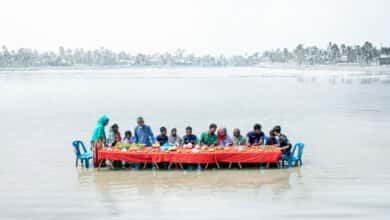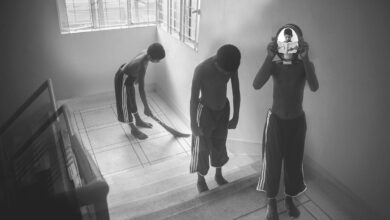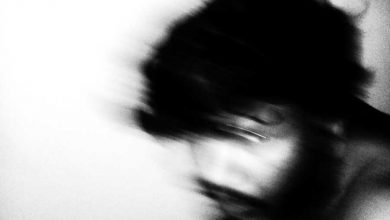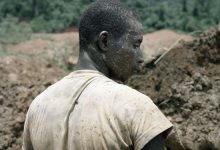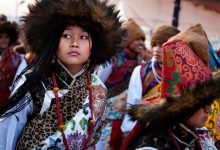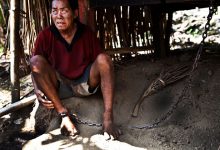
2008 became the point of no return: for the first time in history there are more people living in cities than in rural areas. Cities will grow even larger due to climate change and to environmental migrants, who are destined to become the new humanitarian emergency of the planet in the next few decades.
According to a forecast by the United Nations, in 2050 the Earth will have to face the trauma depicted by 200 million “environmental migrants”: people who will not “land” in the richer nations, but will look for new ways of livelihood in the urban areas of their home countries, which are already overcrowded and often extremely poor. 90% of this kind of migration will occur literally in less developed countries, with relocation from rural areas to the more degraded areas of the city known as slums. The title “the last illusion” refers to the hopes of the environmental migrants who escape from environmental stresses and look for chances of a better life in the city. However, once they get there, because of their lack of resources, education and opportunities, their dream of a favourable future turns into the last of their illusions. For two years I have been following these ‘ghosts’, their movements and I try to tell about their life with photos, videos and interviews.
My long-term project “Environmental migrants: the last illusion” includes three chapters: Ulaan Baator – Mongolia, Dhaka – Bangladesh, Nairobi–Kenya. The choice of these three countries and cities follows the intention to depict the whole range of climate changes and natural hazards which are affecting social and cultural lives in different geographical areas in order to explain the environmental migration process: from the extreme cold of Mongolia to the desertification process in the African continent, passing through river floods, cyclones and see level rise in Bangladesh.
The first two chapters have been shot during 2011. The third chapter is planned to be realized September/October 2013 thanks to a fundraising campaign that I started on
www.kisskissbankbank.com.
Climate change is becoming a ‘diabolic mixture’. In a not too far future the whole planet will have to support the economic and social weight of its consequences. I chose to investigate maybe the most complex and devastating: rural/urban migration.
One in every 45 people will be an environmental migrant by 2050. I would like to give them a voice and I hope you want to do it too by supporting this project. The days that I have to raise funds are not many and also your smaller contribution today can be very important!
You can monitor everything that concerns Environmental Migrants: the last illusion on my site, facebook, blog, twitter.











Interview with Alessandro Grassani
(by Anna Mola)
Anna Mola – Kisskissbankbank sustains projects through crowdfunding. Would you explain the technical and conceptual differences between a traditional assignment sponsored by a magazine or an institute and this kind of funding? What were the main difficulties for you – like many photojournalists – in finding public/private investors for your work?
Alessandro Grassani – The first two chapters of the project were completely self-financed. Now I hope to produce the last chapter with crowdfunding. Crowdfunding is a collaborative financing: in practice they are private citizens, ordinary people, who believe and finance ideas and projects that could have not been achieved otherwise. I decided to put my trust in this instrument because the public and private photography sector is in a crisis and has difficulty today in financing very costly in-depth photographic projects. This is the first time that I am trying to finance my projects with crowdfunding, but for now I must say that it is an exciting experience. In Kenya, to finish my last chapter, I will be sent (if the fund collection is successful, which I hope!) not by an editorial office, but by the hundreds of people who believed in me and my work and have shown their appreciation with a donation. It is like having many customers all together, all ready and impatient to see your work when it is finished. It is a great responsibility!
How was this project born? Did someone help you planning the work phases, choosing the countries, searching information?
I am a documentary photographer. My work is always aimed at the search for little-known stories or new points of view. My interest in environmental topics dates back to 2011, when I decided to start a work on climate changes. A lot had already been said and photographed on the theme, so I started gathering information and, reading a United Nations report, I discovered that 2008 was the year that marked momentous change: for the first time in the history of man there were more people living in cities than in the countryside. The metropolis growth was accelerated by climate changes, which every year prompts millions of people to abandon their lands of origin. A phenomenon that continues to rise, destined in a few decades to become the planet’s new humanitarian emergency with 200 million climate refugees in 2050.
This forecast struck me very much: I wondered who these climate refugees were, where they came from and where they were going, and I decided to tell their stories by following their footsteps. To answer the second question: nobody helped me develop the project, just like when you shoot, I think it is something very personal that you can’t entrust to anyone.
The title of the project – “Environmental migrants: the last illusion” – came up during a lunch, thanks to the contribution of two people very dear to me: my wife, Silvia, and our friend Valentina.
In your reportages we can notice your attention to the relation between persons and cities. This aspect is very important and functional to describe environmental migrations. What photographic style did you adopt to enrich your purpose? I mean: how did you study the space, the framings, the lights also, in order to obtain the result of showing the conditions of an environmental migrant?
Three things are very important: studying and choosing the stories to tell, a strong relationship with the subject to photograph, be patient and walk a lot because if “real journalism is done with shoe leather”, things are no different for photography. All the rest is a matter of personal sensitivity.
What kind of expectations and possible problems did you have before the two trips? Have they happened?
Both of the reportages were prepared very well; I knew I had to tell about climate changes, so the choice of the period for my departure was fundamental. I also knew that I had to tell the stories of the environmental migrants that lived in the cities, so I had to create a contact who could help me identify them. These were the foundations of my project, everything was organized before departure and luckily nothing unexpected happened. Another aspect is foreseeing, as for example in Mongolia, the ability to resist in temperatures that go as low as -50°C. I was worried about my equipment, but in this case too everything went all right!
Do you think this project has changed your way of photographing? Will you keep on creating reportages this way, concerning both the concept and the fundraising?
I don’t think that this project has changed my way of photographing, but it certainly has made it more sure and mature. I’m convinced that this work will somehow be a turning point in my professional course and will probably lead me to change something from the visual and technical point of view.
I actually hope (and trust) that the photography market will get itself out of the crisis it is going through, but it is obvious that if this doesn’t happen I will continue to use all the tools possible, including crowdfunding, to continue doing the type of photography I deeply believe in.



